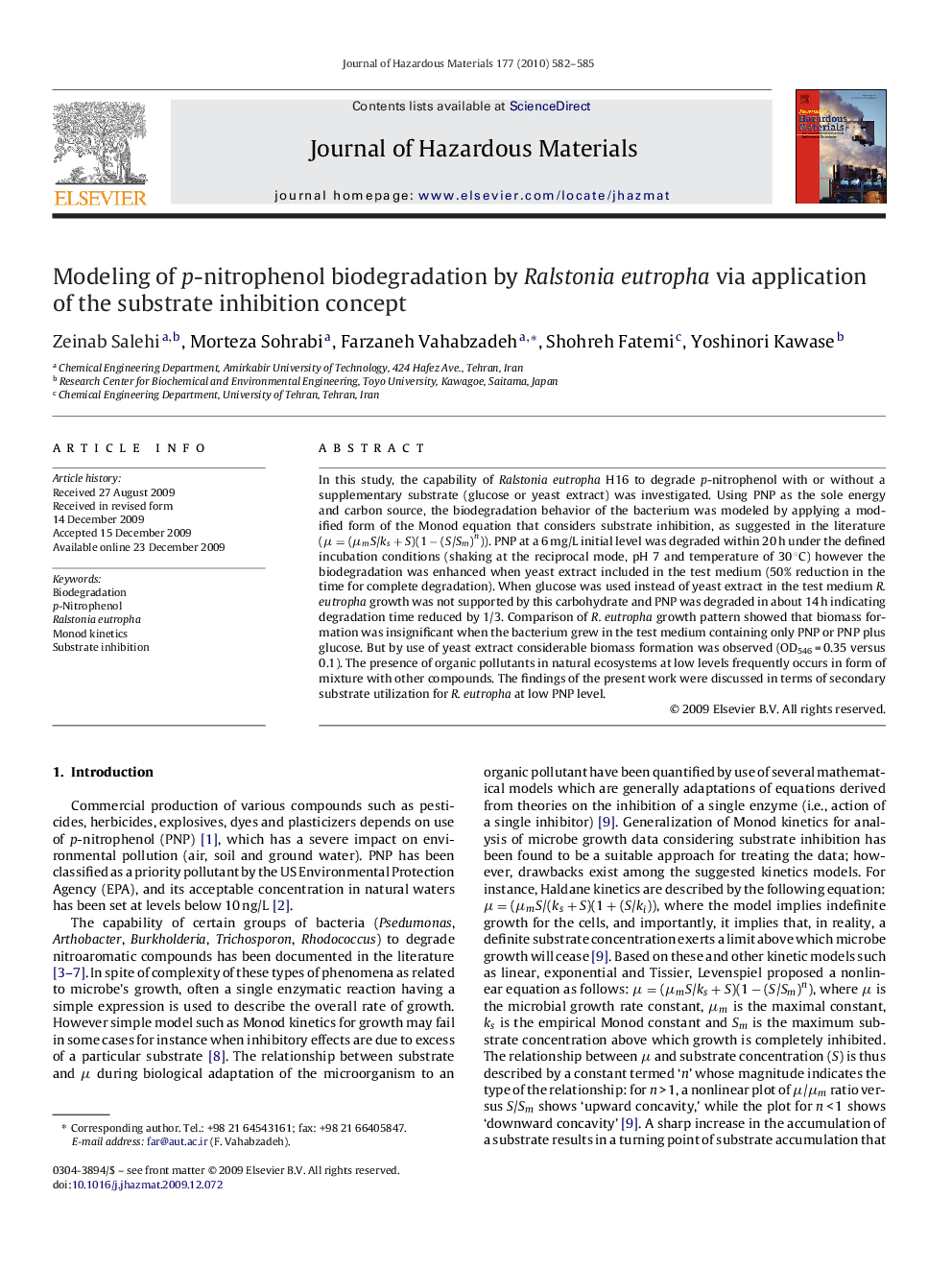| Article ID | Journal | Published Year | Pages | File Type |
|---|---|---|---|---|
| 580901 | Journal of Hazardous Materials | 2010 | 4 Pages |
Abstract
In this study, the capability of Ralstonia eutropha H16 to degrade p-nitrophenol with or without a supplementary substrate (glucose or yeast extract) was investigated. Using PNP as the sole energy and carbon source, the biodegradation behavior of the bacterium was modeled by applying a modified form of the Monod equation that considers substrate inhibition, as suggested in the literature (μ=(μmS/ks+S)(1â(S/Sm)n)). PNP at a 6 mg/L initial level was degraded within 20 h under the defined incubation conditions (shaking at the reciprocal mode, pH 7 and temperature of 30 °C) however the biodegradation was enhanced when yeast extract included in the test medium (50% reduction in the time for complete degradation). When glucose was used instead of yeast extract in the test medium R. eutropha growth was not supported by this carbohydrate and PNP was degraded in about 14 h indicating degradation time reduced by 1/3. Comparison of R. eutropha growth pattern showed that biomass formation was insignificant when the bacterium grew in the test medium containing only PNP or PNP plus glucose. But by use of yeast extract considerable biomass formation was observed (OD546 = 0.35 versus 0.1). The presence of organic pollutants in natural ecosystems at low levels frequently occurs in form of mixture with other compounds. The findings of the present work were discussed in terms of secondary substrate utilization for R. eutropha at low PNP level.
Related Topics
Physical Sciences and Engineering
Chemical Engineering
Chemical Health and Safety
Authors
Zeinab Salehi, Morteza Sohrabi, Farzaneh Vahabzadeh, Shohreh Fatemi, Yoshinori Kawase,
